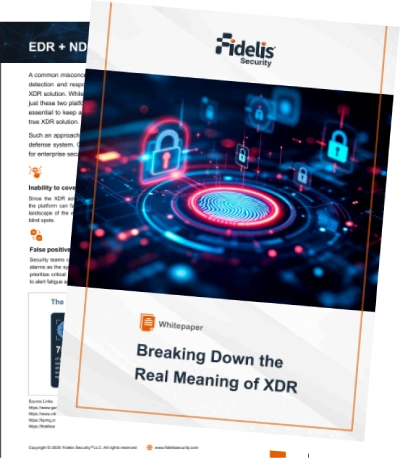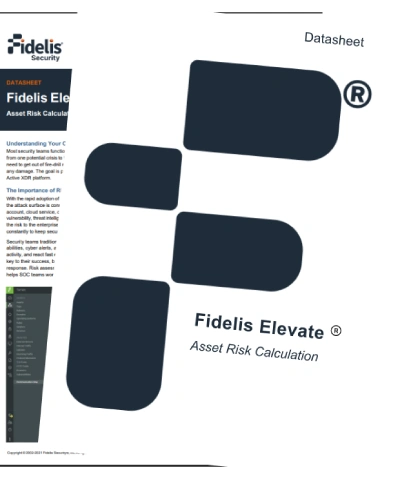Security leaders face an unprecedented challenge: more sophisticated attacks, larger attack surfaces, and growing compliance demands—yet many still rely on spreadsheet-based risk assessments. Here’s how technical risk assessment methodologies can transform guesswork into precision, enabling decision makers to allocate resources effectively while maintaining robust cybersecurity posture.
How to define cyber risk assessment scope
Comprehensive risk assessment scope encompasses multi-layered technical analysis across hybrid infrastructure environments. Security teams must define precise boundaries that include cloud-native workloads, containerized applications, on-premises systems, IoT devices, and third-party integrations.
Technical scope definition includes:
- Network perimeter mapping using automated tools like Nmap with NSE scripts for service detection, Masscan for large-scale port scanning, and Zmap for internet-wide reconnaissance
- Cloud infrastructure enumeration through API calls to AWS Config, Azure Resource Graph, and Google Cloud Asset Inventory
- Automated discovery architecture with real-time monitoring capabilities According to NIST Special Publication 800-115, comprehensive coverage ensures that all critical systems, applications, and networks are included in the assessment.
Fidelis Elevate XDR provides comprehensive scope coverage through passive network monitoring that profiles each asset by role, operating system, connectivity patterns, and vendor identification without requiring agent deployment across hybrid environments.
Discovery Architecture Components:
- SNMP-based discovery using Simple Network Management Protocol to collect device data through Management Information Base (MIB) queries (note: many organizations restrict SNMP access due to security concerns and implement alternative discovery methods)
- Active probing that sends test packets across networks to identify devices and gather response time data
- Continuous monitoring capabilities that update network maps in real-time to reflect infrastructure changes
- Inside this whitepaper, you'll uncover:
- Why stacking EDR and NDR doesn’t equal XDR
- 4 dangerous blind spots fake XDR leaves behind
- What makes Fidelis Elevate® a real unified platform

How to classify and prioritize assets for risk assessment
Technical asset classification employs multi-dimensional scoring algorithms that evaluate business criticality, data sensitivity, and threat exposure. This technical precision enables CISOs to demonstrate security ROI to boards while giving SOC teams clear prioritization guidance.
Asset Classification Core Elements:
- Multi-dimensional scoring algorithms for business criticality evaluation
- Automated tagging schemas using structured metadata stored in CMDB systems
- Crown jewel identification through data discovery tools
- Business impact scoring based on operational dependencies
Business Impact Factors:
- Revenue dependency calculations based on system availability requirements
- Regulatory compliance impact assessments using frameworks like GDPR Article 32, HIPAA Security Rule, and PCI-DSS requirements
- Operational efficiency metrics measuring system interdependencies and failure cascade effects
- Recovery time objectives (RTO) and recovery point objectives (RPO) from business continuity plans
According to FAIR Institute guidance[1], the risk scoring calculation utilizes quantitative formulas that combine multiple risk factors with appropriate weightings based on organizational priorities.
Modern effective asset risk management approaches integrate real-time threat intelligence with asset classification to dynamically adjust risk levels based on current attack campaigns targeting specific technologies or vulnerabilities.
How to integrate threat intelligence in cyber risk assessment
Technical threat intelligence integration transforms abstract security data into actionable insights. Security teams implement STIX/TAXII protocols for standardized threat data exchange with commercial feeds, government sources, and industry sharing organizations.
IOC Processing Pipeline Sources:
- Commercial threat intelligence feed
- Open-source intelligence platforms
- Government threat information portals
- Industry ISACs (FS-ISAC, E-ISAC, H-ISAC)
Threat Landscape Context:
Global cybercrime costs are predicted to reach $10.5 trillion annually by 2025, representing a significant increase from $3 trillion in 2015.
MITRE ATT&CK Integration:
The MITRE ATT&CK framework provides comprehensive matrices for mapping threat behaviors to defensive strategies, enabling correlation of observed network behaviors with adversary tactics, techniques, and procedures.
Fidelis Network Detection and Response performs deep session inspection across all network protocols, automatically correlating packet-level analysis with threat intelligence feeds to identify emerging threats and advanced persistent threat campaigns in real-time.
Vulnerability assessment methodology best practices
Comprehensive vulnerability assessment employs multi-layered scanning techniques that combine network-based, host-based, and application-specific analysis methodologies.
Assessment Frequency Guidelines:
According to NIST SP 800-40[2], regular assessments are advised quarterly, though high-risk areas might require scans more frequently.
Network Vulnerability Scanning Components:
- Port scanning with TCP SYN, UDP, and SCTP protocols to identify active services
- Service fingerprinting using banner grabbing and version detection
- SSL/TLS analysis checking cipher suites, certificate validity, and protocol vulnerabilities
Application Security Testing Integration:
- SAST (Static Application Security Testing) - analyzes source code to identify vulnerability patterns like SQL injection and cross-site scripting
- DAST (Dynamic Application Security Testing) - performs runtime analysis using automated crawlers and fuzzing techniques
- Container security scanning - analyzes base image vulnerabilities and configuration issues
- Cloud security posture management (CSPM) - evaluates cloud infrastructure against security benchmarks
How to calculate quantitative cyber risk
Quantitative cyber risk assessment employs mathematical modeling frameworks that transform qualitative risk observations into measurable financial metrics. This approach enables organizations to move from reactive security to predictive defense.
According to FAIR Institute methodology[3], FAIR (Factor Analysis of Information Risk) provides a structured way to assess and quantify cyber risk.
FAIR Risk Calculation Components:
| Component | Description | Example Factors |
|---|---|---|
| LEF (Loss Event Frequency) | How often attacks succeed | Historical incidents, threat frequency |
| TEF (Threat Event Frequency) | Attack attempt frequency | Industry data, threat intelligence |
| Vulnerability | Likelihood of successful exploitation | Control strength, threat capability |
| LM (Loss Magnitude) | Financial impact per incident | Response costs, downtime, fines |
Risk Formula: Risk = Loss Event Frequency (LEF) × Loss Magnitude (LM)
FAIR Methodology Stages:
- Identify Risk Scenarios
- Evaluate Loss Event Frequency
- Assess Loss Magnitude
- Derive Risk Distributions
Monte Carlo Simulation Benefits:
Monte Carlo simulation generates risk distribution curves using statistical modeling that produces probability distributions rather than single-point estimates.
Note: Accurate results require reliable input distributions based on historical data; without proper data, simulations can produce misleading risk curves.
How to evaluate security controls effectiveness
Technical security controls evaluation requires systematic analysis across multiple security domains. According to NIST SP 800-53[4], organizations should develop a process to continuously monitor security controls using automated and manual testing combinations.
Control Categories Overview:
| Control Type | Examples | Testing Methods |
|---|---|---|
| Technical | Firewalls, IDS/IPS, encryption | Automated scanning, penetration testing |
| Administrative | Policies, procedures, training | Documentation review, compliance audits |
| Physical | Access controls, environmental | Physical inspections, facility assessments |
Network Security Controls Testing:
- Firewall rule analysis and optimization
- Intrusion detection system effectiveness evaluation
- Network segmentation validation
- Bypass technique testing using established penetration testing frameworks
Fidelis Endpoint Security provides behavioral analysis and detection capabilities that enable control effectiveness measurement against both known and unknown threats through advanced endpoint protection evaluation.
Key Control Monitoring Metrics:
- Number of security events detected per timeframe
- Percentage of vulnerabilities addressed within defined SLAs
- Mean time to detection (MTTD) and mean time to response (MTTR)
Regulatory compliance framework mapping
Technical regulatory compliance integration requires systematic mapping of risk assessment findings to specific regulatory requirements using automated compliance management platforms.
NIST Cybersecurity Framework Integration:
| Function | Focus Areas | Risk Assessment Role |
|---|---|---|
| Identify | Asset management, risk assessment, governance | Foundation for all assessment activities |
| Protect | Access control, data security, protective technology | Control effectiveness validation |
| Detect | Anomaly detection, continuous monitoring | Threat detection capability assessment |
| Respond | Response planning, mitigation, improvements | Incident response readiness evaluation |
| Recover | Recovery planning, communications | Business continuity assessment |
Regulatory-Specific Requirements:
- GDPR Article 32 – technical measures assessment for encryption and pseudonymization
- HIPAA Security Rule – ePHI protection and access logging compliance
- SOC 2 Type II – control testing for trust services criteria over extended periods
ISO 27001 Compliance Automation:
- Control objective mapping to technical implementations
- Evidence collection automation through API integrations
- Audit trail generation for control effectiveness documentation
- Non-conformity tracking with corrective action management
How to implement continuous security monitoring
Technical continuous monitoring transforms static risk assessment into dynamic risk management through automated data collection, real-time analysis, and adaptive response mechanisms.
Real-Time Data Collection Architecture:
- Flow-based monitoring using NetFlow, sFlow, and IPFIX protocols
- Endpoint telemetry collection with process execution monitoring and parent-child relationship tracking
- File system integrity monitoring (FIM) with cryptographic hashing
- Cloud environment monitoring through API call logging via CloudTrail, Activity Log, and Cloud Audit Logs
Streaming Analytics Implementation:
- Complex event processing with Apache Kafka, Apache Storm, and Elasticsearch queries
- Real-time correlation of security events across multiple data sources
- Attack pattern identification and emerging threats detection
Machine Learning Analytics for Anomaly Detection:
- Behavioral profiling using unsupervised learning algorithms (k-means clustering, isolation forest)
- Time series analysis for unusual activity pattern detection
- Graph analytics for relationship analysis and insider threat detection
Automated Response Integration:
- SOAR platform integration for automated playbook execution
- Network access control (NAC) for automated quarantine actions
- Endpoint response automation through EDR platform APIs
Threat modeling and simulation techniques
Advanced threat modeling employs structured methodologies that combine automated attack path analysis with manual simulation exercises to validate security control effectiveness.
STRIDE Methodology Categories:
According to Microsoft’s STRIDE documentation[5], the STRIDE threat model analyzes threats across six categories:
| Category | Focus Area | Common Examples |
|---|---|---|
| Spoofing | Identity verification weaknesses | Certificate spoofing, authentication bypass |
| Tampering | Data integrity vulnerabilities | SQL injection, system modifications |
| Repudiation | Audit logging weaknesses | Log tampering, transaction verification gaps |
| Information Disclosure | Data leakage scenarios | Path traversal, information exposure |
| Denial of Service | Resource exhaustion attacks | Memory exhaustion, network flooding |
| Elevation of Privilege | Privilege escalation vulnerabilities | Buffer overflow, authorization bypass |
PASTA Methodology Implementation:
According to OWASP threat modeling documentation[6], PASTA (Process for Attack Simulation and Threat Analysis) provides a 7-step process: Define objectives, Define technical scope, Application decomposition, Threat analysis, Vulnerability analysis, Attack analysis, and Risk and impact analysis.
Attack Path Analysis Components:
- Automated vulnerability chaining analysis through network topology mapping
- Lateral movement path identification
- Privilege escalation scenario modeling based on current system configurations
- Understanding Your Cyber Risk
- How do you calculate risk?
- Risk Simulation

How to automate cyber risk assessment processes
Security orchestration platforms integrate multiple assessment tools through standardized APIs and workflow automation engines, enabling security teams to coordinate vulnerability scanning, threat intelligence correlation, and risk calculation processes efficiently.
API Integration Framework Benefits:
- Standardized interfaces including REST APIs, GraphQL endpoints, and webhook integrations
- Real-time data exchange between vulnerability scanners, threat intelligence platforms, SIEM systems, and CMDB platforms
- Automated correlation and enrichment of security data
CI/CD Security Integration:
- Infrastructure as Code (IaC) security scanning integration
- Container image security scanning in registries with automated policy enforcement
- SAST/DAST integration in build pipelines with quality gate enforcement
Machine Learning Enhancement Areas:
- False positive reduction algorithms that learn from analyst feedback
- Predictive analytics for emerging threats identification using time series analysis
- Automated prioritization of remediation activities based on business impact and exploit likelihood
Workflow Automation Benefits:
- Automated report generation and executive dashboard updates
- Ticket creation in ITSM systems with proper prioritization
- Integration with patch management platforms for automated remediation scheduling
How to measure risk assessment effectiveness
Technical measurement frameworks quantify risk assessment effectiveness through comprehensive metrics collection and analysis. According to SANS Institute guidance[7], regular reports using measurable metrics allow trends to be monitored over time.
Key Performance Indicators (KPIs):
| Metric Category | Specific Measurements | Business Value |
|---|---|---|
| Coverage | Asset discovery completeness percentages | Ensures comprehensive security visibility |
| Response Speed | MTTR for critical vulnerabilities | Demonstrates operational efficiency |
| Risk Reduction | Security incident frequency correlation | Validates control effectiveness |
| Business Alignment | Decision maker utilization of assessment results | Shows strategic security integration |
Effectiveness Tracking Components:
- Mean time to detection (MTTD) through SIEM log analysis
- Risk reduction velocity through before/after risk scoring comparisons
- Remediation cost analysis including labor, system downtime, and resource allocation impacts
Business Alignment Measurement:
- Security investment ROI through quantitative risk reduction measurements
- Regulatory compliance status with audit readiness scoring
- Business objective achievement correlation with security control effectiveness
Continuous Improvement Framework:
- Statistical analysis comparing predicted risks with actual incident outcomes
- Benchmarking against industry standards for peer organization comparison
- Security maturity model progression tracking using frameworks like CMM or NIST CSF maturity levels
By embedding continuous risk assessment into security operations, organizations move from reactive security to predictive defense—allocating controls where they deliver maximum risk reduction while demonstrating measurable value to executive leadership.
Frequently Ask Questions
What distinguishes quantitative from qualitative cyber risk assessment?
| Assessment Type | Output Format | Decision Making | Resource Planning |
|---|---|---|---|
| Qualitative | Risk categories (high/medium/low) | Limited precision | General guidelines |
| Quantitative | Financial values and probabilities | Data-driven decisions | Specific budget allocation |
How often should organizations update their cyber risk assessments?
Organizations should conduct comprehensive cyber risk assessments quarterly, with continuous monitoring approaches increasingly replacing static assessments. High-risk areas may require monthly evaluations, while critical infrastructure changes should trigger immediate reassessments to address rapidly evolving cyber threats.
Which regulatory frameworks require formal cyber risk assessments?
Major frameworks including NIST Cybersecurity Framework, ISO 27001, SOX, HIPAA, and GDPR mandate regular cybersecurity audit & risk assessment activities. The specific requirements vary by industry and geographic location, with financial services, healthcare, and critical infrastructure sectors having the most stringent assessment obligations.
What role does artificial intelligence play in modern risk assessment tools?
AI enhances risk assessment through automated threat detection, behavioral analysis, and predictive modeling. Machine learning algorithms process vast amounts of security data to identify patterns, prioritize vulnerabilities, and provide defensible risk calculations based on historical incident data and industry benchmarks.
How can small businesses implement effective cyber risk assessments with limited resources?
Small businesses can leverage automated questionnaires, cloud-based security ratings platforms, and vendor-provided assessment tools to conduct basic risk assessments. Open-source tools provide cost-effective alternatives to enterprise-grade solutions while maintaining technical accuracy.
What metrics should organizations track to measure risk assessment effectiveness?
Key metrics include vulnerability remediation times, risk level trend analysis, security incident frequency, compliance audit results, and operational efficiency improvements following control implementation. Organizations should also track resource allocation effectiveness and business objective alignment through quantitative measurements.



